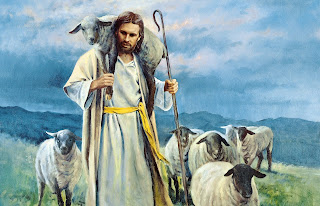The lessons of
history
(Published in Others,
May, 2018)
By David Woodbury
"Those that fail to learn from history, are doomed
to repeat it." (Winston Churchill)
In the late ‘70s The Salvation Army in the Australia Eastern Territory began to explore and
embrace the emerging church growth philosophy. We were persuaded that we were a
dying organisation and unless we adopted some extraordinary growth measures we
would soon cease to exist. It would seem that such a philosophy may well have
been flawed since we were still a growing organisation right through until
the late 80s.
1950 – 10,257 soldiers
1960 – 11,200 soldiers
1970 – 11,595 soldiers
1980 – 12,271 soldiers
Late 1980s – 13,257 soldiers
From somewhere in the 1980s officers were increasingly
exposed to purportedly church growth experts more often than not from American,
personality-centred mega-churches such as Robert Schuller, John Wimber, Wayne
Cordeiro, Bill Hybels, Rick Warren etc. Inordinate funds were spent on sending
officers to some of these centres, mostly in the United States, to learn church
growth principles which would, we hoped, reverse the perceived decline in our
organisation; a practice that continued for some decades. No doubt some
officers benefited personally from the strategy; however, there was no impact
on the territory.
If this philosophy had been correct, then our soldier’s roll
would have continued to grow, however, quite the reverse is true. From around
that time, the soldiers roll went into freefall. From 13,257 soldiers in the
late 1980s, we have declined to 7,880 by 2016 (around 41% decrease). Now while
there may be some cultural issues present and given the fact that Papua New
Guinea was separated from the Eastern Territory in this period, the decline is
still quite dramatic. Should the trend continue by 2040 there will be no soldiers. Like any army around the world, be it military, secular
or spiritual, our strength is measured in our enlisted personnel.
Some of the personality-centred church leaders we have
extolled have turned out to be disappointing. One of the protagonists held up
as an example of this successful growth movement was Robert Schuller. He was
vaunted as a living example of how we might resurrect the perceived decline in
The Salvation Army. His TV ministry, The
Hour of Power, along with his
opulent Crystal Cathedral marked his philosophy out with the all the
characterisations of American excesses and consumerism. However, like many
organisations, based on a personality the whole empire crumbled amidst bitter
family squabbling, his church filed for bankruptcy in 2010 and his Crystal
Cathedral was sold off to the Roman Catholic Church.
In 1980, personally committed to church growth principles,
along with other officers from this territory, I attended a self-funded church
growth seminar at Paul Yongi Cho’s church, the Yoido Full Gospel Church, in Seoul,
Korea, then the largest church in the world. The most crucial lesson I learnt
from this is that; not all concepts are
transferable between church and/or national cultures. Paul Yongi Cho’s
integrity was later called into question and he was found guilty of tax evasion
and sentenced to three years imprisonment, which was suspended for
five years, and he was fined the equivalent of almost $5 million.
There has been a predominant influence exerted on us from
the American megachurch movement which needs to be challenged. American and
Australian cultures may look the same on the surface but there are significant
and crucial differences between them. The words of the two national anthems
highlight our cultural differences.
The Star Spangled
Banner with its “bombs bursting in the air”;
And Advance Australia
Fair with its “golden soil and wealth for toil”.
Not only our national cultures different, but also between
church cultures. Not all concepts are transferable.
Perhaps the time has come for some painful and candid
self-examination and an admission that in pursuing American mega-church
philosophy, we simply got it wrong, in spite of our best intentions. It may
well be that we were mesmerised by the spectacle of the immense. Numbers and
size do not necessarily demonstrate God’s blessing on a spiritual organisation.
As we seek to unite the two Australian territories and
reposition The Salvation Army for the future, what is needed is that we are
true to our roots and our calling. It is unlikely we can go past General John
Gowans’ triad; The Salvation Army was
created to achieve three very definite things. It was created to save souls, to
grow saints, and to serve suffering humanity, and Gowans was to add: If we stop doing any one of those three The
Salvation Army will cease to be The Salvation Army.
Perhaps it is time that we stopped looking to other
denominations and perceived experts, mimicking their philosophies and their
practices, and started looking to the history and the essence of our own
movement and our own people, if we are to be true to our God-ordained mission.
This article reflects
dynamics found in the Australia Eastern Territory, statistics being drawn from
the SAMIS program and the Year Book.
Statistics in the Australia Southern Territory have been difficult to
locate, as the Year Book does nor record soldiership statistics until around
2000.







Comments
Post a Comment